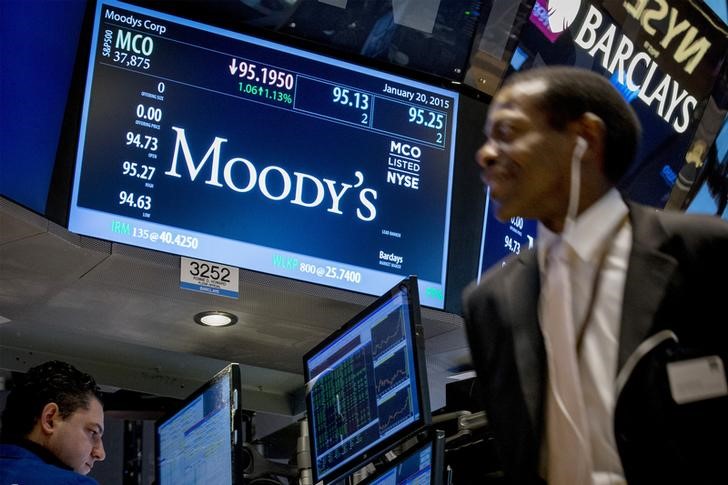By Ketki Saxena
Investing.com -- Bank stocks experienced a significant drop on Tuesday as Moody's Investors Service downgraded credit ratings for several smaller regional banks and placed six larger institutions under review for potential downgrades.
Moody's report cited rising funding costs and declining income metrics as factors that will erode profitability, which serves as the first buffer against losses. The rating agency also noted that some rated U.S. banks have already begun transitioning to higher regulatory expectations for capital, liquidity, and loss-absorbing capacity in anticipation of federal regulators’ proposed new capital rules. These rules are expected to be implemented in July 2025 and phased in over a three-year period.
The new capital rules cannot be finalized until after the current comment period ends in November, giving banks nearly five years to comply. One concern for banks is unrealized losses on securities portfolios, which will be mitigated over time as bonds mature and are repaid at face value. This situation could further improve if interest rates begin to decline over the next few years, which would lift bond market values.
Among the 139 banks in the S&P Banks Select Industry Index, tracked by the SPDR® S&P Bank ETF (NYSE:KBE), net interest margins (NIM) for 2023 and 2024 are expected to contract next year for 102 banks out of the 138 polled by FactSet. NIM is the spread between a bank's average annualized yield on loans and securities and its average cost for deposits and wholesale borrowings.
In light of an inverted yield curve for U.S. Treasury securities and a federal-funds rate in a target range of 5.25% to 5.50%, banks have been forced to compete for deposits as customers seek higher yields on savings accounts and certificates of deposits. This competition has led to rising funding costs for many banks, particularly those that increase their wholesale borrowings to bolster liquidity.
However, a screen of KBE highlights ten regional banks analysts expect to see their NIM widen by at least 15 basis points in 2024. This list includes PacWest (NASDAQ:PACW) Bancorp PACW and Banc of California Inc. BANC, which announced a merger of equals on July 25. The merger is expected to close late this year or early in 2024, pending votes by both banks’ shareholders and regulatory approvals.
The Moody's downgrades affected regional powerhouse M&T Bank (NYSE:MTB) as well as smaller institutions like Webster Financial Corporation (NYSE:WBS), BOK Financial Corporation (NASDAQ:BOKF) and Old National Bancorp (NASDAQ:ONB). All cuts were by a single notch, maintaining the investment-grade status of these banks. Several other larger banks, including U.S. Bancorp (NYSE:USB), Truist Financial, Bank of New York Mellon (NYSE:BK) and State Street (NYSE:STT) are under review by Moody's for potential downgrades.
Moody's actions point to continued vulnerability in the banking sector due to devalued bonds, jittery investors, deposit withdrawals and higher costs - issues that caused panic earlier this year following the failures of Silicon Valley Bank, Signature Bank and First Republic Bank. The Federal Reserve’s ongoing efforts to lift interest rates to combat inflation continue to impact U.S. banking system’s funding and economic capital significantly.
The ratings firm also warned about the potential impact of a recession in early 2024 on loan demand leading to loan defaults. Banks could face challenges in commercial real estate due to higher interest rates, vacant offices from remote work shift, and reduced credit availability.
